#perucetus
Text

Please welcome Perucetus, the new - and largest- known archeoceti.
A whale of enormous proportions. While it's exact size and weight is certainly a matter of heated debates it was no doubt a really big boi. Here a quick sketch of it approaching a time traveler.
10K notes
·
View notes
Text
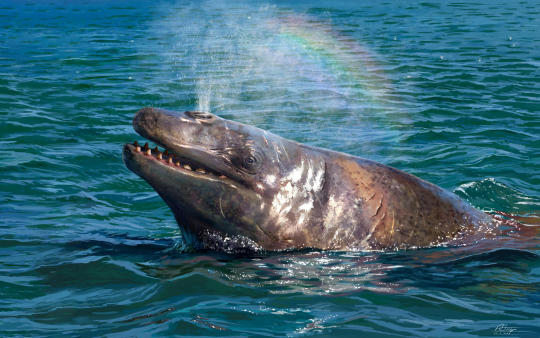
Perucetus colossus by Anthony J. Hutchings.
3K notes
·
View notes
Text


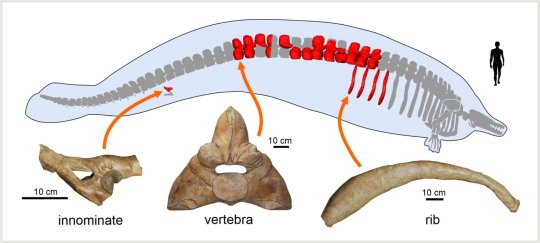
I know I usually talk about crocs, but this is too good not to share. A new giant basilosaurid whale with weird anatomy from the Eocene of Peru.
Perucetus colossus is a peculiar animal. It's bones were incredibly thick and incredibly dense, very much unlike those of modern whales and even more extreme than even those of the thicker basilosaurids (aptly named Pachycetinae i.e. thick whales). These adaptations have been compared to modern manatees and dugongs.
Know the weight range is highly dependent on what you base the math on. Using manatees as a proxy, you get a weight of "only" 85 tons....using extreme values for whales a whopping 340 tons. Mean values for whales a still really big 180 tons. This could indicate that Perucetus rivaled the Blue Whale as the worlds heaviest animal ever.
The ecology is poorly understood tho. We know basilosaurids preferred coastal waters, and with all the similarities to manatees it is reasonable to assume that Perucetus was a shallow water animal itself. It also likely wasn't the fastest swimmer. And the lack of a skull basically means we can't say much on its diet. We can wager a guess and say it wasn't a predator because, you know....it also likely wasn't a grazer. Cool as it would be, we don't really have herbivorous whales like that so its incredibly unlikely. The two more likely suggestions are that it lived on small animals burried in the ocean floor, sorta like a grey whale. Or that it was a scavenger like a sleeper shark (tho I find that suggestion far less likely, giving me scavenging T.rex vibes ngl). But again, once we get a skull we can talk about this better.
Sidenote I do find the name a little underwhelming. It's a bizarre animal and the best we could come up with is "Colossal whale from Peru". I'm also not a mammal person, but from what I'm being told the silhouette is a little exaggerated and it wasn't necessarily that thick in life.
Life reconstruction by A. Gennari, paper can be found here
A heavyweight early whale pushes the boundaries of vertebrate morphology | Nature
#perucetus#basilosauridae#paleontology news#palaeoblr#prehistory#eocene#early whale#evolution#science#whale
2K notes
·
View notes
Text

My first Tumblr post(idk what they’re called?)!
Welcoming Perucetus, the new large bodied Basilisaur that swam the shallow coastal waters of Peru. This boi was possibly the heaviest animal to ever live, but we still don’t have much of its skeleton.
2K notes
·
View notes
Text
Quick simple diorama with newly discovered giant whale, Perucetus!
1K notes
·
View notes
Text
Time Travel Question 36: Prehistory (Iteration Unknown)
These Questions are the result of suggestions from the previous iteration.
Please add new suggestions below if you have them for future consideration. All cultures and time periods welcome.
#Time Travel#Prehistory#Paleontology#Dinosaurs#Perucetus#Pangea#Campanian Ignimbrite Supervolcano#The Ediacaran Period#Evolution#Extinct Animals#Diplodicus#Deinonychus#Acrocanthosaurus#The Glen Rose Trackway Hunt#Andrewsarchus
376 notes
·
View notes
Text

Perucetus
Patreon • Ko-fi • Facebook • Twitter • Prints & Merch
699 notes
·
View notes
Text

Hi there,
Perucetus Colossus, the newly described basilosaur from the Eocene of Peru, probably the heaviest animal on earth
986 notes
·
View notes
Text
screaming and crying and throwing up knowing I will NEVER get to see living Perucetus colossus

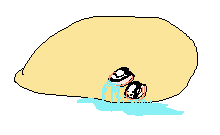
875 notes
·
View notes
Text

Fantastic new discovery
774 notes
·
View notes
Text
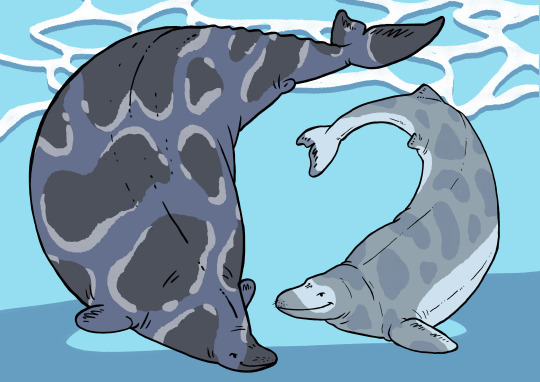
WHAT A HEFTY BOIE!!!!!!
a sizeable lad!!!
Perucetus, my beloved blorbo!!!! ive only known you for a day but i am literally so obsessed with you now aaaaaaaa!!!!
the boy already is getting a bit controversial, so i added a more reasonable, standard basilosaurus-shaped version as well
they are frens
#perucetus#digital art#paleoart#paleontology#marine life#whale#heckin chonker#new whale just dropped#orb
631 notes
·
View notes
Text


The archeocete Perucetus colossus dives through a coastal bloom of jellyfish in the Pisco Basin (southern Peru), some time during the Eocene (with bonus multiview).
I originally intended to add epibionts to this reconstruction (reflecting the specialized communities found on many living whales, especially baleen whales). Yet, interestingly, it appears that most animal epibionts and ectoparasites of modern cetaceans, such as whale barnacles (Hayashi et al. 2013) and remoras (Friedman et al. 2013), only appeared in the Neogene or late Paleogene, or have a poorly known (co-)evolutionary history, like whale lice (Pfeiffer 2009, Iwasa-Arai & Serejo 2018) and pennellids (large parasitic copepods) (Hermosilla et al. 2015). So, no epibionts* for big lad Perucetus!
References and notes about the reconstruction:
*animal epibionts. Unicellular eukaryotes like diatoms were most likely present on early cetaceans, given their prevalence on modern large marine animals (Ashworth et al. 2022). Of course, it is possible that other animals (i.e., early, less specialized representatives of modern groups, or different taxa altogether) were also already exploiting the surfaces offered by these early whales; however, this remains entirely speculative.
The reconstruction of Perucetus proposed in its original description (Bianucci et al. 2023) includes some rather odd (if interesting) choices about soft tissues, including limbs with webbed and distinguishable fingers, and a manatee-like tail. While these choices might be defendable in light of the rather basal status of Perucetus among cetaceans, I opted for a more derived look based on the assumption that fully marine cetaceans like basilosaurids would have probably rapidly acquired hydrodynamically favorable adaptations, pushing them towards a more familiar Neoceti-like appearance (even though Perucetus itself was likely a poor swimmer (Bianucci et al. 2023), it seems likely to me that this was a secondarily acquired trait, given the less extreme morphology of other basilosaurids).
Reconstruction in the multiview scaled to ~18 m in length after the estimations of Bianucci et al. (2023).
References:
Ashworth, M. P., Majewska, R., Frankovich, T. A., Sullivan, M., Bosak, S., Filek, K., Van de Vijver, B., Arendt, M., Schwenter, J., Nel, R., Robinson, N. J., Gary, M. P., Theriot, E. C., Stacy, N. I., Lam, D. W., Perrault, J. R., Manire, C. A., & Manning, S. R. (2022). Cultivating epizoic diatoms provides insights into the evolution and ecology of both epibionts and hosts. Scientific Reports, 12(1), Article 1. https://doi.org/10.1038/s41598-022-19064-0
Bianucci, G., Lambert, O., Urbina, M., Merella, M., Collareta, A., Bennion, R., Salas-Gismondi, R., Benites-Palomino, A., Post, K., de Muizon, C., Bosio, G., Di Celma, C., Malinverno, E., Pierantoni, P. P., Villa, I. M., & Amson, E. (2023). A heavyweight early whale pushes the boundaries of vertebrate morphology. Nature, 620(7975), Article 7975. https://doi.org/10.1038/s41586-023-06381-1
Friedman, M., Johanson, Z., Harrington, R. C., Near, T. J., & Graham, M. R. (2013). An early fossil remora (Echeneoidea) reveals the evolutionary assembly of the adhesion disc. Proceedings of the Royal Society B: Biological Sciences, 280(1766), 20131200. https://doi.org/10.1098/rspb.2013.1200
Hayashi, R., Chan, B. K. K., Simon-Blecher, N., Watanabe, H., Guy-Haim, T., Yonezawa, T., Levy, Y., Shuto, T., & Achituv, Y. (2013). Phylogenetic position and evolutionary history of the turtle and whale barnacles (Cirripedia: Balanomorpha: Coronuloidea). Molecular Phylogenetics and Evolution, 67(1), 9–14. https://doi.org/10.1016/j.ympev.2012.12.018
Hermosilla, C., Silva, L. M. R., Prieto, R., Kleinertz, S., Taubert, A., & Silva, M. A. (2015). Endo- and ectoparasites of large whales (Cetartiodactyla: Balaenopteridae, Physeteridae): Overcoming difficulties in obtaining appropriate samples by non- and minimally-invasive methods. International Journal for Parasitology: Parasites and Wildlife, 4(3), 414–420. https://doi.org/10.1016/j.ijppaw.2015.11.002
Pfeiffer, C. J. (2009). Whale Lice. In W. F. Perrin, B. Würsig, & J. G. M. Thewissen (Eds.), Encyclopedia of Marine Mammals (Second Edition) (pp. 1220–1223). Academic Press. https://doi.org/10.1016/B978-0-12-373553-9.00279-0
#'a heavyweight early whale pushes the boundaries of...' blablabla you've all read it by now#i have nothing to add#it's fat#look at it#that is all#perucetus#cetacean#mammal#vertebrate#eocene#cenozoic#paleontology#palaeoblr#paleoart#my art
399 notes
·
View notes
Text



hello basilosaurid nation i have been thinking about the perucetus colossus and his tiny little legs !
[id: three drawings of a whale-like animal. they are roughly seal-shaped in terms of body, with a round flat tail and a small protruding oval head. all three have small back legs and feet. the first, coloured purplish, has flipper-like anterior appendages. the second, coloured blue, has big hands at the end of long, wide arms. the third is greenish, and has traditional finger-less whale fins. end id]
159 notes
·
View notes
Text
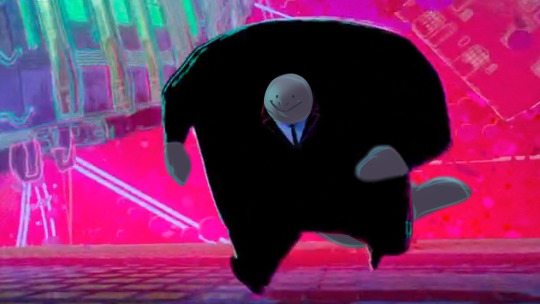
I cant deal with this lads tiny face
366 notes
·
View notes
Text

While last week's Tutcetus was the smallest known basilosaurid whale, another recently-announced member of that group was almost the complete opposite.
Perucetus colossus was a chonker. An absolute unit of a whale.
Living during the Eocene (~38 million years ago) in shallow marine waters covering what is now the coast of Peru, this ancient whale is known from several vertebrae, ribs, and parts of its pelvis. As a result its full size is uncertain, but based on the proportions of other basilosaurids it was probably somewhere around 17-20m long (~56'-66') – similar in length to the larger specimens of Basilosaurus.
However, it had much thicker denser bones, even more so than those of its close relative Antaecetus, suggesting that its full body mass was much higher than the rather slender Basilosaurus – and possibly heavier than even modern blue whales despite being shorter in overall length.
Perucetus' thickened vertebrae were also fairly inflexible in most directions, indicating it was a sirenian-like slow swimmer with limited maneuverability – but it did have a surprisingly good ability to bend its body downwards. Without skull material it's unclear what its diet was like, but it may have been a suction-feeder hoovering up seafloor prey like modern grey whales or walruses.
I've reconstructed it here with a speculative bristly fleshy downturned snout inspired by the weird skull of Makaracetus, an earlier whale that may have also been a walrus-like bottom-feeder.
———
NixIllustration.com | Tumblr | Patreon
#science illustration#paleontology#paleoart#palaeoblr#perucetus#pachycetinae#basilosauridae#pelagiceti#archaeoceti#cetacean#whale#artiodactyla#ungulate#mammal#art#speculative reconstruction#i am predicting Weird Snoot Shenanigans for this chonkwhale#gotta have some very specialized feeding ecology going on there
390 notes
·
View notes
Text
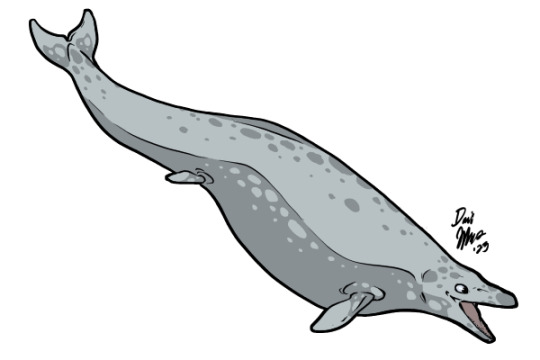
Big guy!!!!
290 notes
·
View notes